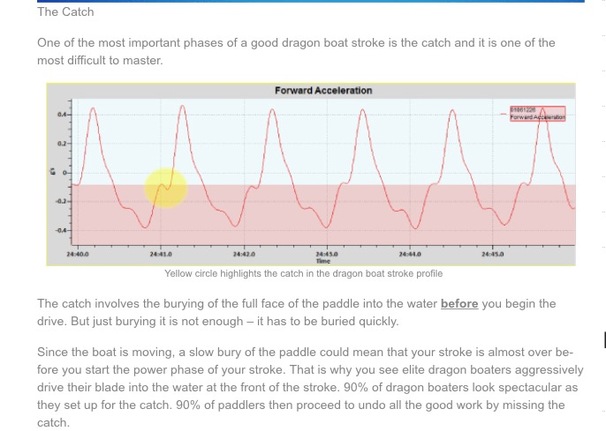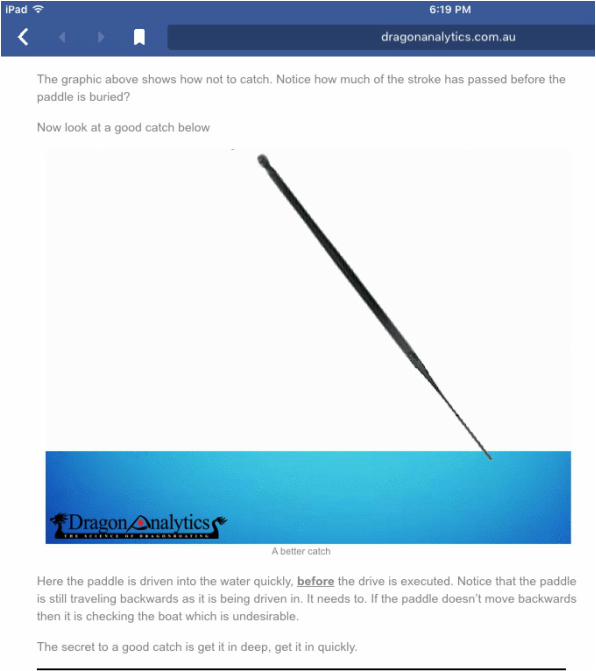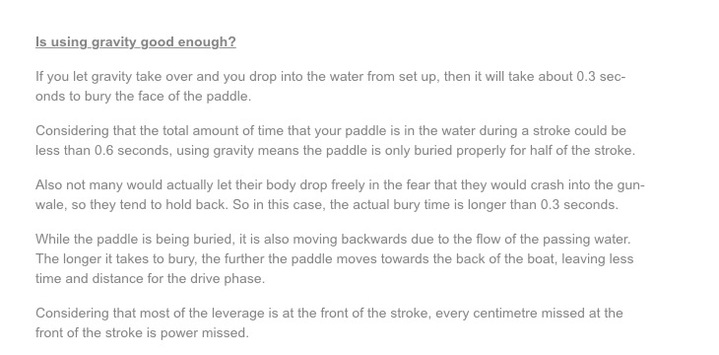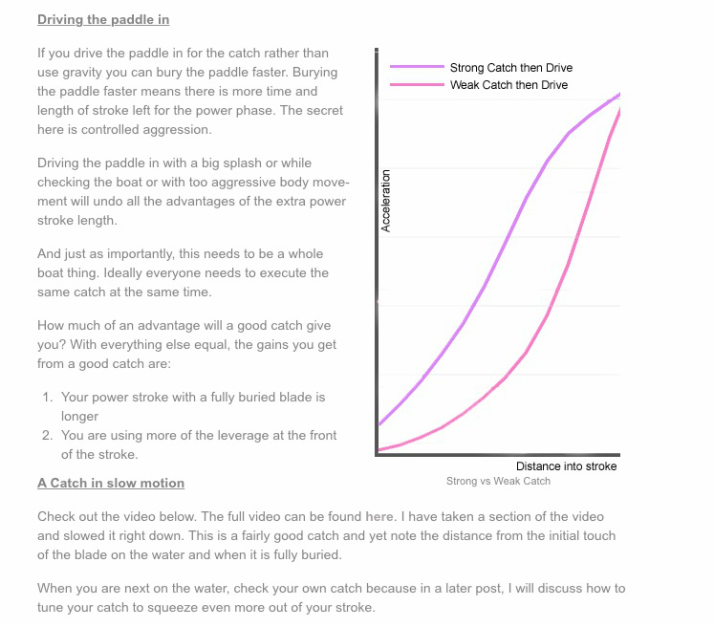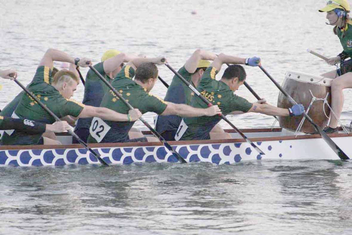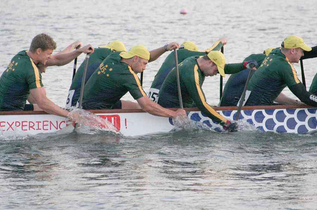Paddling Technique - F.Y.I. - How to master 'The Catch'
PADDLING TECHNIQUE EXPLAINED
Technique – the paddling technique is complex as it does require a combination of movements from your body to generate maximum power.
There are four components – CATCH, POWER, EXIT, RECOVERY.
Set up for the CATCH – this is very important as it determines the rest of your stroke. A good set up will assist you in generating the power required to move the boat.
- · Forward angle of the blade – watch the positioning of your top hand and the bottom arm.
- · The top hand should be in front and above the forehead whilst the bottom arm is straight.
- · Body position – slight lean forward and rotate from the hip.
POWER PHASE – this is where the work is done in the split second you generate the power to surge the boat forward. You need to fully understand it is the use of a combination of motion in your body to create this power.
What to look for at the power phase –
Bad points
– see image below, paddler with the long sleeve top, his top hand is pushing forward and pulling too far back. He is also crouching over with head down, not following the paddler in front and hence his timing is out.
What to look for at the power phase –
- · Rotation from the hip/core
- · Top hand assists with the drive through ie: driving down on the paddle
- · Bottom hand pulls back but not too far
- · Leg drive to increase power output
- · Paddle should still be at a forward angle before power is being applied
- · Ensure blade is deep in the water to maximise a full stroke
- · Feel a good workout on your core
Bad points
- · Paddle being straight down (this is a vertical position at the power phase)
- · Pulling too far back – likely to create drag
- · Top hand should not push forward as this will help to pull too far back and create drag
– see image below, paddler with the long sleeve top, his top hand is pushing forward and pulling too far back. He is also crouching over with head down, not following the paddler in front and hence his timing is out.
EXIT – the top hand should control this motion by lifting the paddle up and clear the water for the return stroke.
What to look for at the exit –
RECOVERY – able to relax the grip during recovery
Prepared by Karen Kiely 11.9.2010
(with thanks to George Louie – coach DBNSW Development Program)
What to look for at the exit –
- · Top hand does not drop/drag inside the boat;
- · Aim to run the top hand along the gunwale
- · Keep your elbow up, this is the ideal line to take.
RECOVERY – able to relax the grip during recovery
- · A fast, smooth return to the Catch position
- · Keep your blade close to the water. Raising your paddle too high wastes time and energy
- · It is important to relax your grip (on your ripping arm) on the paddle during the recovery (return) phase to avoid over-tiring.
- · Breathing normally and consistently will help you remain strong
Prepared by Karen Kiely 11.9.2010
(with thanks to George Louie – coach DBNSW Development Program)
Watching the following videos will help to bring all of this together.
The first is an excellent demonstration of the stroke broken down into the following components:
The 'A' Position. Paddles Up!
Placing the paddle in the water a.k.a. the 'Catch'
The Exit
The Recovery
NOTE:
The head is always up and looking forward. This is essential for perfect timing in the boat.
The first is an excellent demonstration of the stroke broken down into the following components:
The 'A' Position. Paddles Up!
- · Turn your back to the water
- · Reach forward stretching arm and back
- · Place paddle at the thigh of the paddler in front of you
- · Lean you body outside of the boat
- · Keep your top arm straight
- · Keep your top shoulder over the water
Placing the paddle in the water a.k.a. the 'Catch'
- · Enter blade fully in water at approximately 60° angle
- · Pull and counter-rotate with lower arm, shoulder and back
- · Drive down aggressively with top arm
- · Sit up with body
The Exit
- · Exit occurs when paddle arrives at your hip by lifting the top arm
The Recovery
- · Return to 'A' position by rotating, stretching bottom arm, shoulder and back
- · Additionally, paddlers should attempt to transfer their weight onto the blade
NOTE:
The head is always up and looking forward. This is essential for perfect timing in the boat.
|
Watch Lyne Lariviere do it:
|
|
Three more videos to watch:
|
1. For good basic information about:
|
|
|
2. For an emphasis on the power phase technique
|
|
|
1. Good smooth technique
|
|
